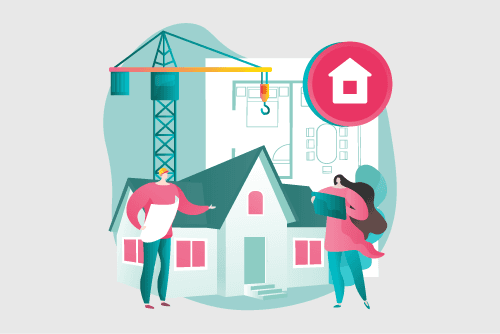How to Become a Building Designer: Your Creative Career

There’s a common misconception that working a creative job isn’t a viable option for most. However, with the right information and attitude, you can direct your creative energy into a sustainable and fulfilling career! Becoming a building designer and creating new homes is one way to achieve just this.
What is a building designer?
Once known as draftsmen or draftspeople, a building designer can offer several professional services to their clients. However, first and foremost, they are responsible for designing and planning functional, efficient and creative homes. Building designers work to translate their clients’ ideas and dreams into reality. Hence, thorough knowledge of design, the building trade and relevant construction laws is required.
Building designer versus registered architect
Architects and building designers are similar in their responsibility to their clients: aiding the design, planning and sometimes construction of homes. Architects, however, undergo extensive tertiary education and practical placement to advise their clients both creatively and practically.
Building designers, on the other hand, can operate without any formal qualifications. This makes it a fantastic option for those looking to enter a creative career without a long study commitment. Thorough knowledge and invested interest in any formal design field can help you get started on this career pathway.

“I worked as a real estate agent and later a communications manager before I finally turned my passion into my profession and got a design diploma.”
—Martina Hayes, building and interior designer specialising in renovation
Although building designers may not have the licensing restrictions that architects must operate under, they are permitted to operate within local building and planning regulations.
What does a building designer career look like?
Building designers may help prospective homeowners through several steps concerning the planning, designing, renovating, construction and interior design of their dream homes. Hence, these professionals need a wide range of skills to meet their professional responsibilities effectively.
Some essential skills include:
Design
IT
Construction Business
Communication
A building designer’s clients are the most crucial piece of the puzzle. Hence, although practical design skills and knowledge of building work are imperative, your ability to join your creative flair with another person’s vision is central!
“It’s ALL about the client, finding out what they love, who they are, and finding the perfect balance between their budget and their dreams.”
—Susannah Schulz, building designer at Lockhart Drafting & Design
An industry overview
Building design has strong projected industry growth. Job opportunities are projected to rise by 19.5% in the next five years.
Furthermore, building design is financially stable, with an average annual salary of 80k. This figure can rise with more years of experience and positive referrals under your belt! Building design is also reported to have high job satisfaction, due to high rates of job security and the ability to achieve a healthy work-life balance.
Becoming a building designer
As mentioned above, building designers technically don’t need any formal qualifications or accreditations to operate within Australia (this means no required university degree!).
Many people who have previously worked within the design industry, or just have an interest in architecture have oriented themselves to building design with ease. Others have entered the field after completing a design course, such as an Advanced Diploma or Diploma of Building Design, as a pathway into the field.
“I didn’t thrive in a school environment, but when I started on this path, I knew I had found my calling.”
— Kris Aird, building designer and owner of Designer Homes Perth
A fantastic way to develop the skills required for this pathway is to complete a qualification tailored to building design.
Building a portfolio
People choose a building designer based on their previous work and their projected ability to bring their ideas to life practically and economically. An aesthetically-pleasing, well laid out portfolio coupled with excellent customer service skills can set you apart from not only other building designers — but architects as well!
Make sure you:
Your portfolio can display to prospective clients your ability to bring their home to life no matter the foundations you’re given to start with.

My favourite part of being a Building Designer is the initial stage, where I get to sit down with the client and really get to know them, what their values are and how they would like their home to suit their lifestyle.
I love being able to sit with them and see the stress start to leave their faces, as they begin to trust me as their designer.
—Susannah Schulz, building designer at Lockhart Drafting & Design
Working as a building designer can be a viable, financially secure and fulfilling career path. By upskilling your current design skills and building your portfolio with confidence, you’ll be well on your way to landing your first Building Designer role!
12 of the Most Fun Jobs: What Are The Most Enjoyable Careers?
Fun jobs give you satisfaction, let you harness your skills and interests, and couple good work-life balance with job security. Here are some of the most fun jobs that tick all these important boxes.



